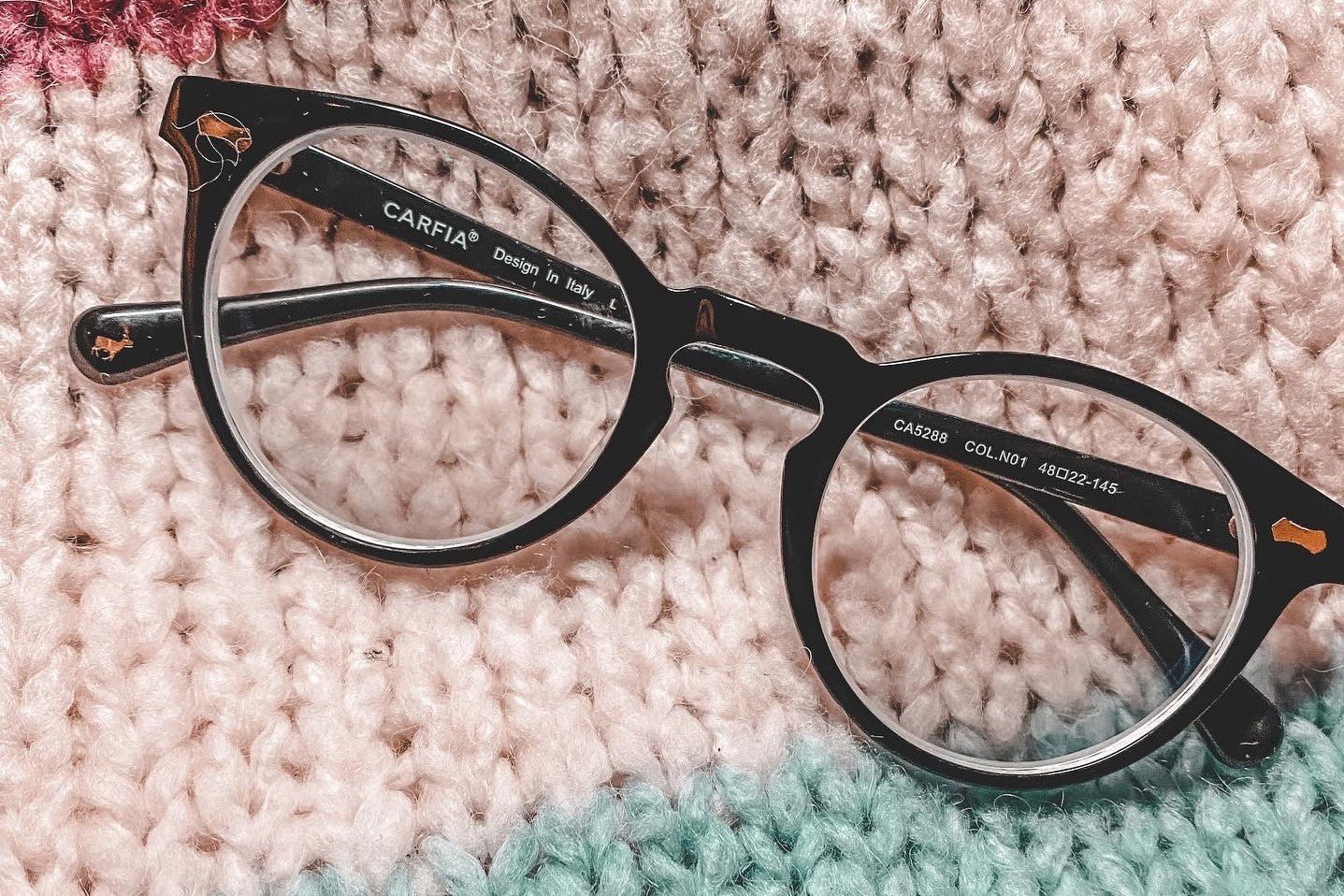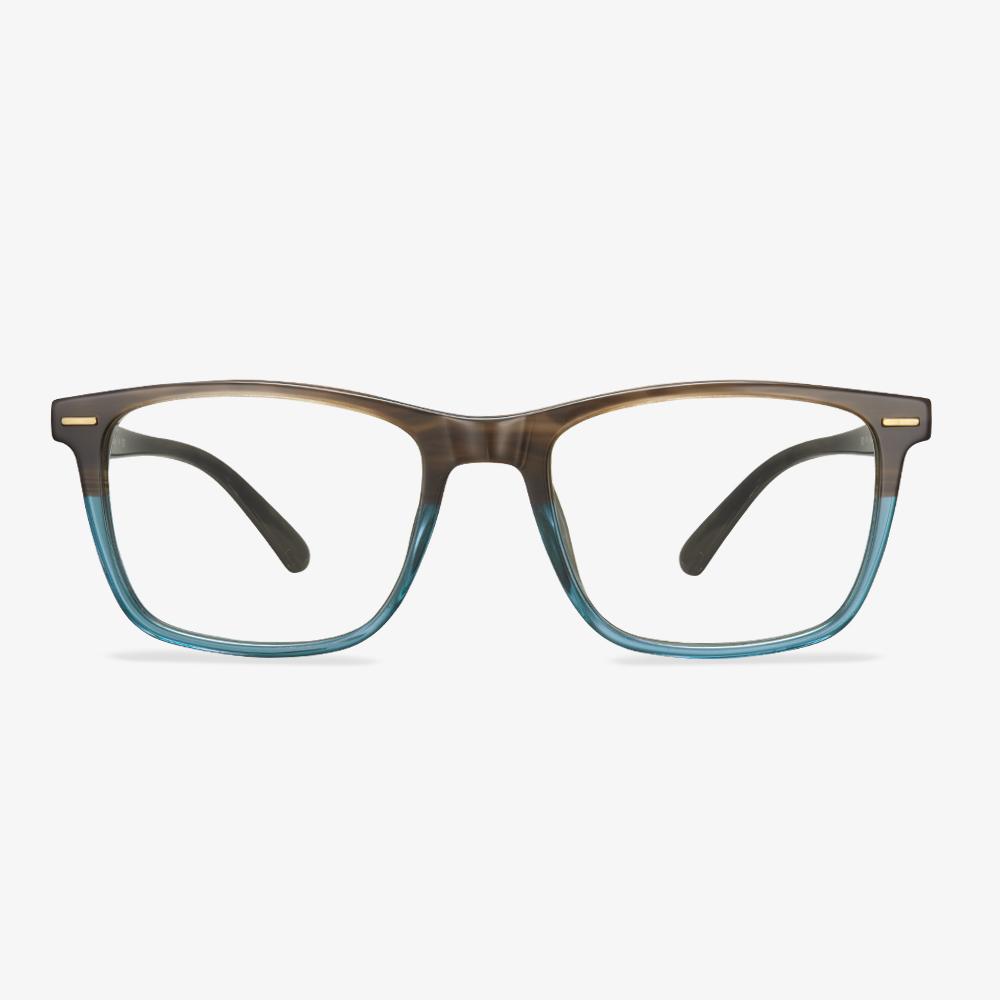What Are Progressive Glasses?
Trifocal glasses and no-line progressive lenses are multi-focal glasses, meaning that their lenses offer multiple correction fields. Whether you have been wearing multi-focal glasses for a while, or you have just begun to look at options for correcting vision after 40 years old, you may have heard the terms trifocal or progressive glasses.
Progressive lenses offer a smooth transition from distance vision through intermediate vision to near vision, and they supply all the in-between corrections. Progressive lenses have three different viewing zones, as trifocal glasses do, and they have progressive powers of corrections, easing eye strain and providing the most natural vision correction.
How to Pop Lenses Out of Glasses with Plastic Frames?
In this section, we will show you how to take glasses out of plastic frames. It would be much easier to remove lenses from plastic frames because lenses are not fitted as tightly in them as in metal frames.
Now, here is the tutorial.
- Many plastic lenses will come out easily as you push through your thumb from the inner side and fix your fingers on the other side.
- If they do not come off, you can choose to heat the plastic a little bit so that it expands and allows the lenses to come out.
- To heat the plastic frames, you can immerse the glasses in a bowl of hot water. The water should be hot, not warm but of course only as much as you can handle amicably.
- Be careful to not drop your lenses in the bowl. Dry them with a no microfiber cloth and then you can remove them. You can’t use any towels because those can damage any blue light or anti reflective covering.
After all steps are finished, you can remove lenses from glasses.
How Should Glasses Fit?
Make sure your pupils align correctly. The combination of frame, arm, bridge, and lens measurement can affect the placement of your pupils within your lenses, which is essential to the proper function and comfort of your prescription. To ensure glasses fit properly, the pupils should align horizontally in the center of your lenses.
Also, you should consider your face shape. When choosing a pair of suitable glasses, you should consider what face shape you have.
NIGHT - LITE ® NIGHT DRIVING GLASSES
The glasses allow you to see clearly without straining your eyes to ensure safe driving. They can eliminate strong reflected light, reduce glare, and distracting from reflection. They can filter out high-intensity glare from oncoming traffic, street lights, and billboards while improving visual acuity for night driving. They give you more control over the steering wheel and better visibility, thus reducing the stress of driving. They can relieve pressure on the eyes. Eye strain can be prevented by eliminating light entering the eye.
Essilor glasses
Essilor glasses are cost-effective glasses. Essilor is originated in France and has a history of 160 years. If Ray-Ban focuses on styling and sunglasses are its flagship products, Essilor is the first in the field of optometry. Essilor focuses on the research of the precision of optometry lenses and has always been a leader in the technology of myopic lenses. Innovation is at the heart of Essilor's DNA, so new lenses are constantly being created for different groups of people.
Progressive Lens
Standard progressive lenses are multifocal lenses with three observation areas, farsightedness, intermediate vision, and nearsightedness. Unlike bifocals, there are no visible lines between each viewing area. They have a seamless, invisible design, where the optical power changes 'gradually' throughout the lens. Many people confuse 'bifocal' or 'trifocal' with 'progressive' but remember that bifocals and trifocals have visible lines in the lens, while progressive lenses do not. Because progressive lenses have no lines in the lens, they are more popular multifocal lenses than bifocal lenses.
The main observation area of the progressive lens is a far distance, the smaller area at the bottom of the lens is used for myopia, and the middle area in the middle is smaller. Standard progressive glasses are very suitable for general purpose glasses, focusing on hyperopia activities (such as driving and walking) and sufficient area in the lenses for nearsighted activities (such as reading and computer use). The left and right sides or 'convex corners' of the lens are deliberately blurred to achieve an invisible design. The clearest line of sight in the gradual process is from the center to the top of the lens.
How to determine whether progressive lenses are worn correctly?
Once your glasses are back from the lab, the optometrist will let you put them on for an audition and make final adjustments to make sure they fit. If the prescription is not in the center of the lens, it will make it difficult for you to see clearly. The key is that the lenses match the wearer's eyes, especially the pupils. Before ordering a new lens, the optometrist takes two measurements: pupil distance and fitting height.











































